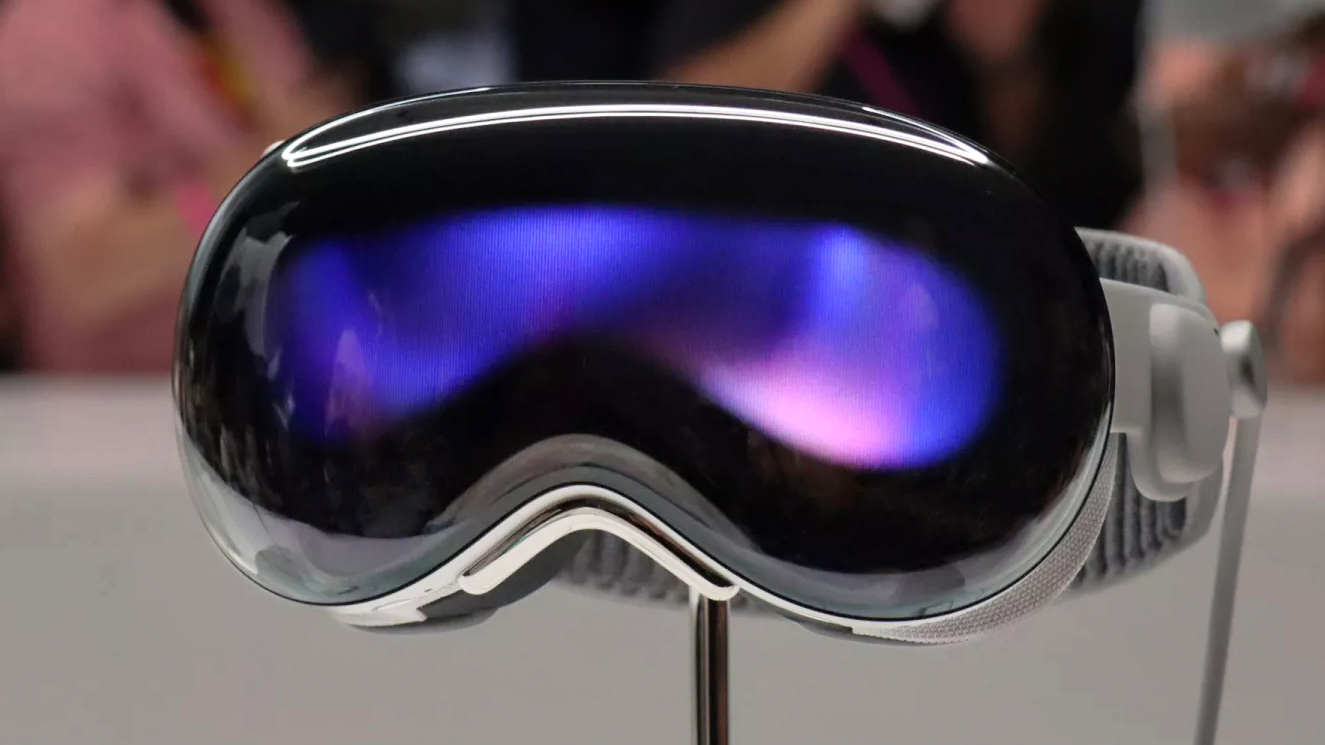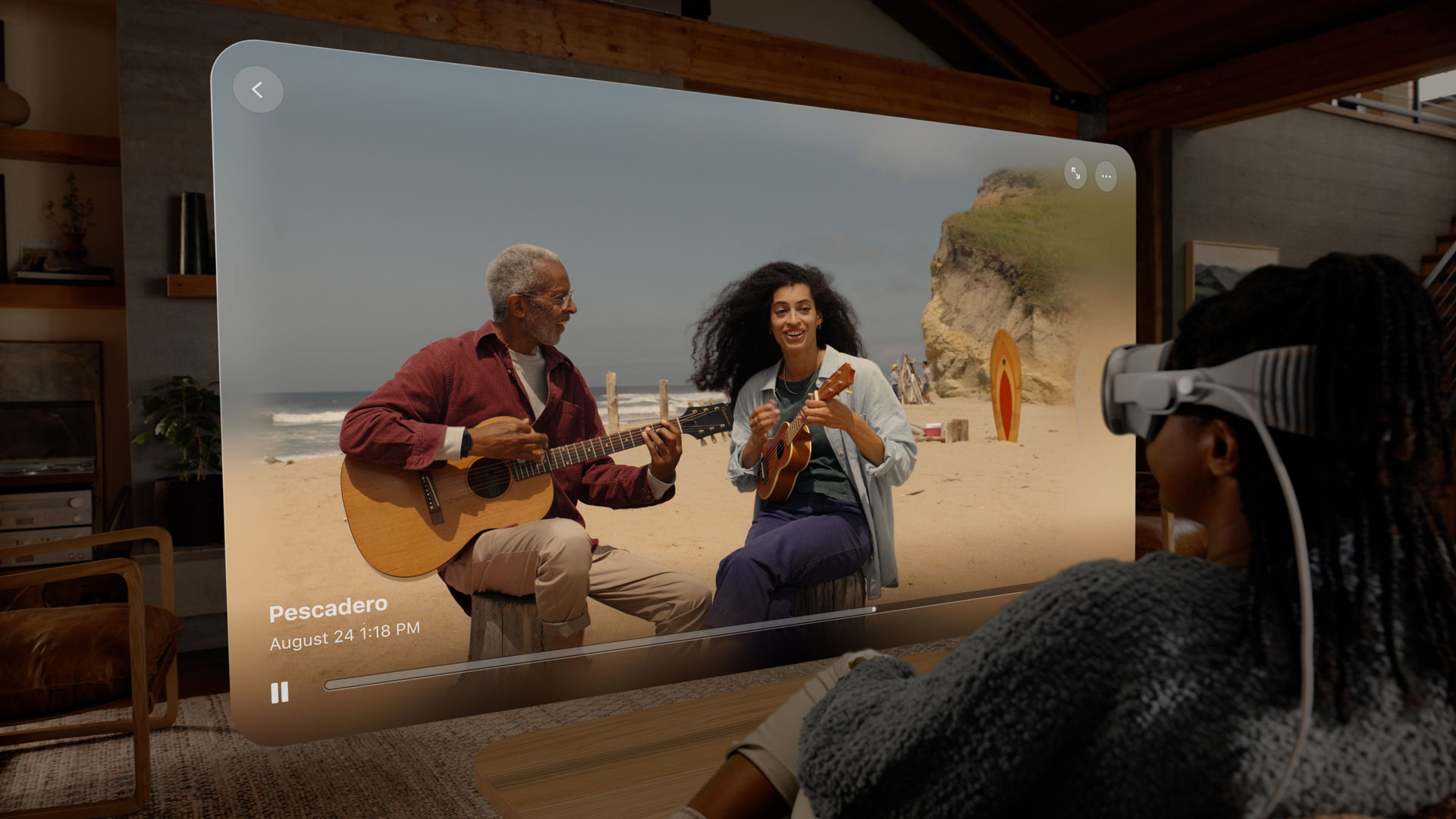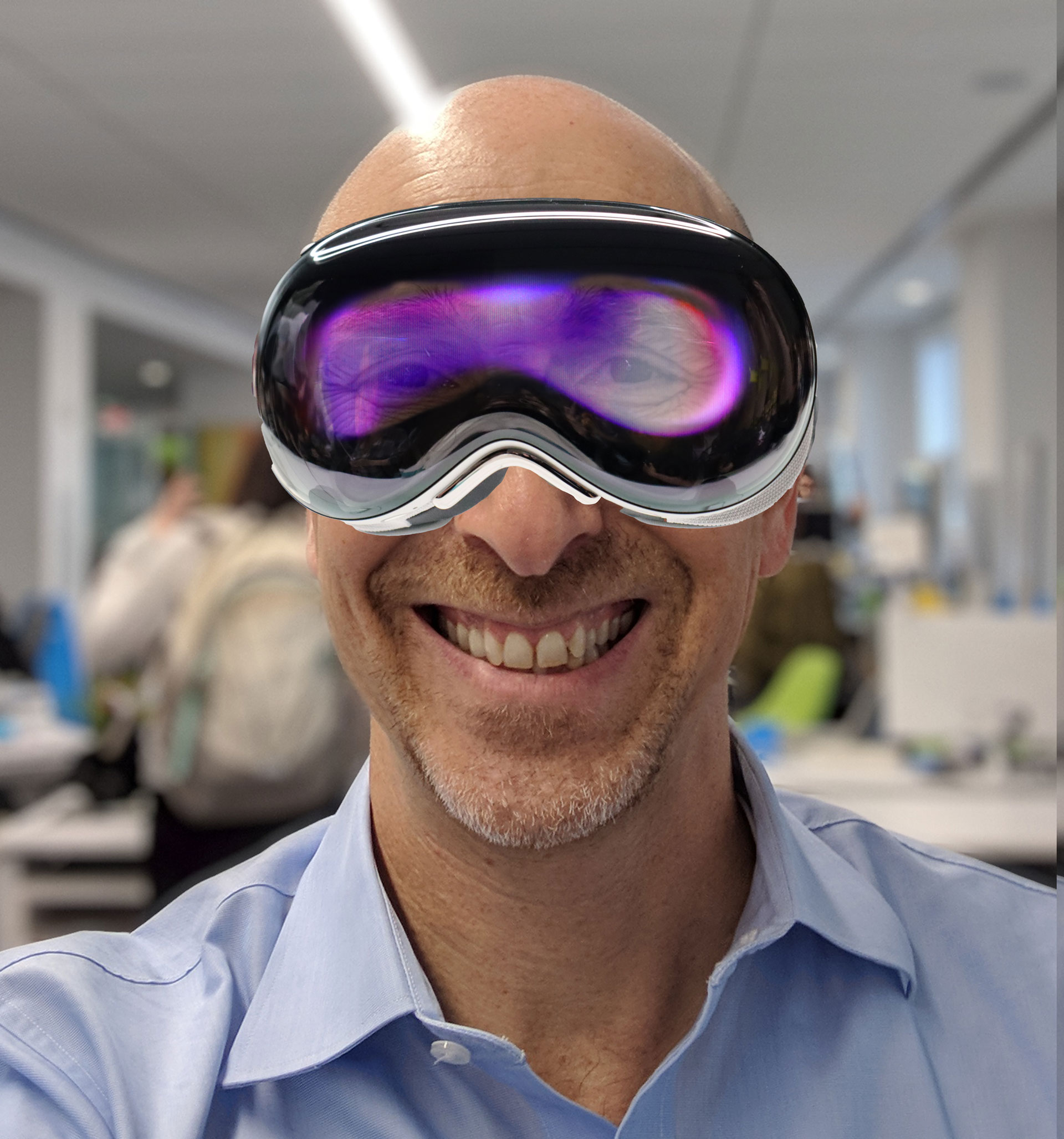Vision Pro may arrive in January and could be Apple's biggest gamble ever

Apple's Vision Pro mixed reality headset is an astounding device. It's beautiful and powerful and creates virtually unmatched experiences in virtual and augmented reality. It's also a massive bet for Apple, perhaps the Cupertino tech giant's biggest gamble since it sought to reignite its Mac business in 1998.
If rumors are to be believed, Apple could be a little more than a month away from seeding the first-generation Vision Pro headsets in Apple retail locations across the country (if not around the world). According to industry prognosticator and reliable leaker Bloomberg tech journalist Mark Gurman, Apple plans to train employees on how to use Vision Pro right after the New Year and then have those people train other employees when the headsets arrive in stores before the end of January.
That news, if accurate, is not surprising. Apple always said the Vision Pro would arrive sometime in 2024 and based on the slow drip of information and hands-on experiences we've seen this year (I've now had two: one right after WWDC and another just last month), Apple is trying to prep not just its retail teams but the media that will try to explain this new Apple device to consumers.
Here's the thing. For as impressive as Apple's first VR/AR headgear is, its resemblance to anything else in the Apple product stable is minimal at best. The training Apple must give to people who will sell the product will be not only about what Apple Vision Pro can do but also about its cost, the necessary customization, and even why there's an external battery.
No other Apple product has faced comparative hurdles in its launch.
That price tag

I know that Apple's products are generally more expensive than the competition but the Vision Pro is on another plane.
$3,499 is almost as much as a powerful mid-tier M3 Pro MacBook Pro 14 inch. It's more than double the most expensive and best iPhone. It's a downpayment on a nice car. Apple is smart, and I'm sure it doesn't expect to sell millions of these headsets in the first year. It might be imagining a class of well-heeled early adopters and Vision Pro evangelists. They could lay the groundwork for excitement around the rumored much less expensive versions of the Vision Pro that will probably arrive in 2025.
Sign up for breaking news, reviews, opinion, top tech deals, and more.
The Spatial Computing question

With the Vision Pro, Apple is seeking to introduce an entirely new category of digital experience that it calls "Spatial Computing." Put simply, that means computing in a 3D space. Objects are not just on a 2D screen in front of your face. They are near and far and all round. It's a development language Apple's app partners are just learning right now.
For consumers, it's a new interface frontier. The confusion might be something akin to entering the computing world Upside Down but without all the scary elements. As I've mentioned in my hands-on experiences, Apple does an excellent job of making all this intuitive, but there's no getting around the learning curve, even if the angle is oblique.
Even as Apple has introduced new product form factors and interface paradigms, it's never presented something as radical as the Vision Pro. There is a world of difference between an iPhone you pull out of your pocket and a headset you drop on your noggin and that covers your eyes. No matter what, consumers will feel like they're entering the unknown.
Apple's first custom gear

There has also never been a consumer-grade Apple product that, for many users requires customization before you can even use it. Vision Pro is made to accommodate prescription lenses for eyeglass wearers like me but you can't use them without those lenses in there. In other words, after you pay for Vision Pro, you may need to chip in for the right Zeiss prescription lenses and, I'm guessing, wait a week or so for those to arrive before you finally get to take home your pricey Vision Pro headset.
Battery unpacked

Finally, there's the battery pack. it's just as attractive as the rest of the Vision Pro headset but is also like a weird vestigial tail that all other Apple products shed ages ago.
I've been thinking lately about why Apple decided to put the battery pack outside of the headset. Ostensibly this would allow you to easily swap from one depleted battery pack to a charged-up new one, though there's no indication that the Vision Pro will ship with more than one pack.
The more obvious reason is that Apple wanted to keep the weight of the headset low to maximize wearability and comfort. Still, when you wear the headset and that little silver pack sits on the couch next to you, you may find yourself wondering if you should hold it or drop it into your pocket. There is no getting away from the cable that will run from that metal slab to the headset. I stood up once when I was wearing the headset and I think I or someone else held the battery. Realistically, most of your use will be seated so maybe you won't notice.
Still, it's not normal for an Apple product to have an external battery back and it's an indication of a problem that Apple could not easily solve.
Assessing the risk
All of this adds up to not a bad product. It's still the most exciting thing Apple has produced in years. It's also not an obvious home run. I may love it, but will average consumers who are not used to bleeding-edge tech and prices? Will they want to spend thousands on a product they cannot use immediately without customization? Will they find it as intuitive as Apple hopes and become inspired by Spatial Computing's possibilities? Will the astounding spatial photography erase all other concerns? Maybe.
I don't know. All I do know is that we are quickly entering Apple's biggest product risk arena in decades. What happens in January is anyone's guess.
You might also like
- This is how Apple is telling developers to build apps for Vision Pro ...
- Apple Vision Pro 2 leak reveals what's coming next for Apple's ...
- Meta's new VR headset design looks like a next-gen Apple Vision Pro
- I tried the iPhone 15 Pro's new spatial video feature, and it will be ...
- Hands on: Apple Vision Pro: I just wore the future
- Apple Vision Pro: price, release year, and everything we know about ...

A 38-year industry veteran and award-winning journalist, Lance has covered technology since PCs were the size of suitcases and “on line” meant “waiting.” He’s a former Lifewire Editor-in-Chief, Mashable Editor-in-Chief, and, before that, Editor in Chief of PCMag.com and Senior Vice President of Content for Ziff Davis, Inc. He also wrote a popular, weekly tech column for Medium called The Upgrade.
Lance Ulanoff makes frequent appearances on national, international, and local news programs including Live with Kelly and Mark, the Today Show, Good Morning America, CNBC, CNN, and the BBC.